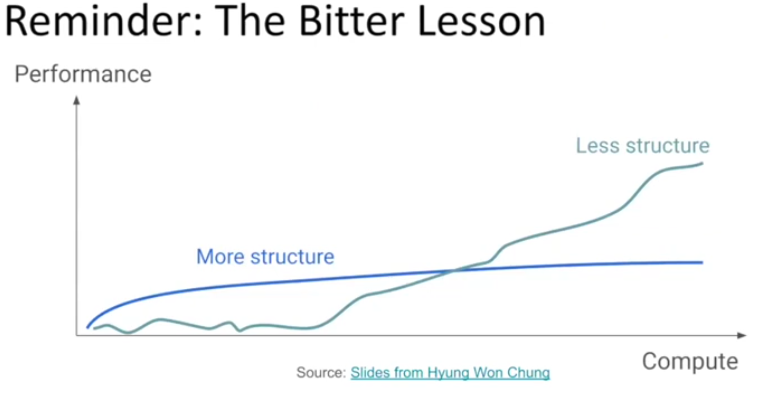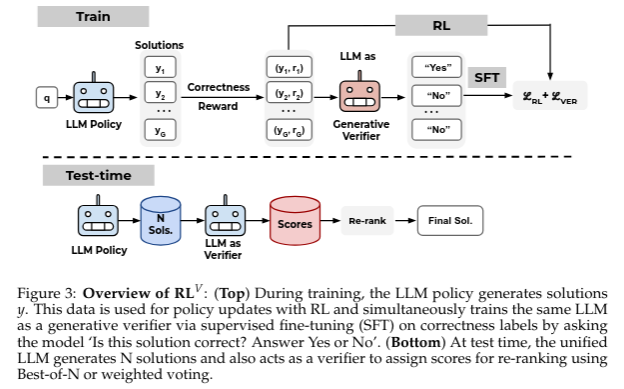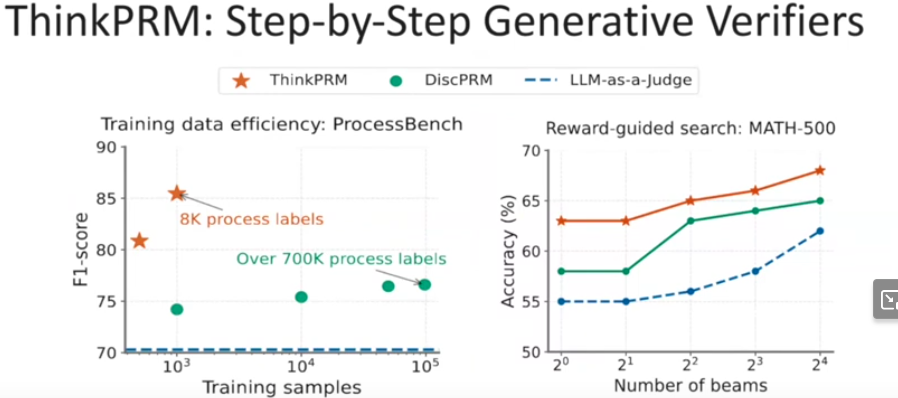Sources:
-
Scaling RL compute for LLMs on any domain is bottlenecked by how “good” verified we have.
⇒ how do we build powerful LLM verifiers that scale with computation?

-
Classic discriminative classifiers predict a scalar score using a linear layer on top of LLMs
- They do not use the text generation capabilities of LLMs
- Cannot leverage “test-time compute” to improve performance
-
Generative verifiers can
- use reasoning
- parallel sampling ⇒ average or majority voting
-
Training generative verifiers, for a given domain, is more data efficient than training classifiers (about 100x for math domains)
Self-Verification: Unifying LLM Reasoners with Generative Verifiers
- https://arxiv.org/abs/2505.04842
- The same model does the generation and verification
- They train the model both with an RL loss (for generation) and an SFT loss (for verification)
- Then, at test time, you can use the model to assign a ranking to its own solutions

- Prevalent reinforcement learning~(RL) methods for fine-tuning LLM reasoners, such as GRPO , abandon the learned value function in favor of empirically estimated returns.
- This hinders test-time compute scaling that relies on using the value-function for verification. In this work, they propose RLV that augments any ‘value-free’ RL method by jointly training the LLM as both a reasoner and a generative verifier using RL-generated data, adding verification capabilities without significant overhead.
- Empirically, RLV boosts MATH accuracy by over 20% with parallel sampling and enables 8−32× efficient test-time compute scaling compared to the base RL method.
- RLV also exhibits strong generalization capabilities for both easy-to-hard and out-of-domain tasks.
